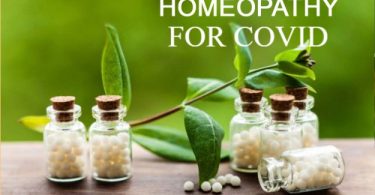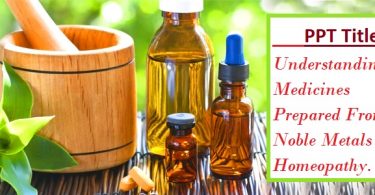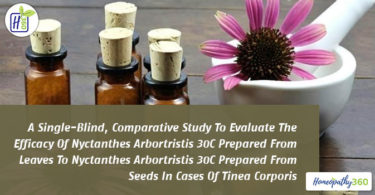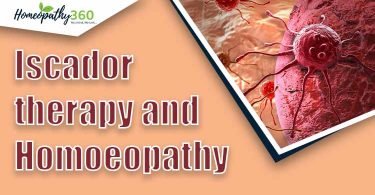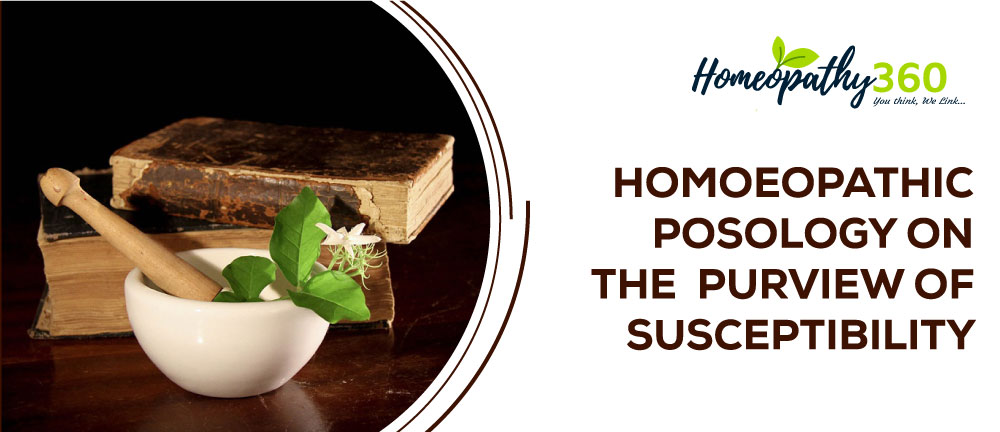
Abstract:
Posology is the integral part of homoeopathic drug selection, in various conditions the selection of exact dose and its repetition depends. The most important condition is susceptibility of the patient which indicates the posology for annihilation of the disease symptom and establishing cure. Stalwarts in homoeopathy have denoted the need to understand the susceptibility in order to choose exact posology.
Keywords- Homoeopathic posology, susceptibility, Hahnemann, posology.
INTRODUCTION: Posology is one of those topics in our literature that though being frequently discussed in academic set up but mostly gets ignored when it comes to bedside. When we are in clinics, we mostly go by whims or by tradition instead of giving importance to it. This is the most frequent scenario in selection of potency and doses. This paper is the outcome of our effort to understand the fundamental concepts behind the susceptibility and posology more importantly its proper and judicious application at bedside.
WORD MEANING:
The term ‘posology’ originated from the greek word- ‘posos’ means how much and ‘logos’ means discourse. Posology is the doctrine of doses of medicine.
Relation with organon and pharmacy:
Posology in relation to organon – quantum of thrust
Posology in relation to pharmacy – quantity of doses
Posology in relation to 5th edition of Organon of Medicine – ‘medicament c la gouttee’ (centesimal scale)1
Posology in relation to 6th edition of Organon of Medicine – ‘medicament a globule’ (50 millesimal scale)1
5 points to be considered in the choice of the dose:
The susceptibility of the patient
The seat of the disease
The nature and intensity of the disease
The stage and duration of the disease
The previous treatment of the disease
Spectrum of health, disease, susceptibility and posology:
The spectral concept of health emphasizes that the health of an individual is not static; it is a dynamic phenomenon and a process of continuous change, subject to frequent subtle variations. What is considered maximum health today may be minimum tomorrow?
That is, a person may function at maximum levels if health today, and diminished levels of health tomorrow. It implies that health is a state not to be attained once and for all, but ever to be renewed. There are degrees or “levels of health” as there are degrees or severity of illness.
So it can be easily said that a spectrum means a spark of light , which is easily diversion from one corner to other, like that susceptibility is modified in different condition or state.2
STUART CLOSE’S VIEW:
According to Close-
“Susceptibility is one of the fundamental attributes of life. Upon it depends all functioning, all vital processes, physiological and pathological. Digestion, assimilation, nutrition, repair, secretion, excretion, metabolism and catabolism, as well as all disease processes arising from infection or contagion depend upon the power of the organism to react to specific stimuli.”3

MORBID SUSCEPTIBILITY AND HEALTHY SUCEPTIBLITY
One must also predicate a state of normal susceptibility to remedial as well as toxic agencies, which it is the duty of the physician to conserve and utilise. No agent or procedure should be used as a therapeutic measure which has the power to diminish, break down or destroy the normal susceptibility or reactibility of the organism, because that is one of the most valuable medical assets we possess. Without it all our efforts to cure are in vain. To use agents in such a manner or in such a form or quantity as do diminish, impair or destroy the power of the organism to react to stimuli, is to align ourselves with the forces of death and disintegration.3
Susceptibility as a state may be increased, diminished or destroyed. Either of these is a morbid state which must be considered therapeutically from the standpoint of the individual patient. Morbid susceptibility may be regarded as a negative or minus condition – a state of lowered resistance. The problem is one of adjustment to conditions. The point to be kept in mind is to recognise and conserve normal susceptibility in all our dealing with the sick and to do nothing to impair it.3
REACTION TO THE MEDICINES
He says that the kind and degree of reaction to the medicines depends upon the degree of susceptibility of the patient, and that the kind and degree of susceptibility, in any particular case or patient, depends largely upon how the case is handled by the physician; for it is in his power to modify susceptibility. Indeed, this power to modify susceptibility is the basis of the art of the physician.4
If the physician knows how to modify susceptibility in such a way as to satisfy the requirements of the sick organism and bring about a true cure, then is he a physician indeed; since cure consists simply in satisfying the morbid susceptibility of the organismand putting an end to the influx of disease-producing causes. To accomplish this he must know that susceptibility implies and includes affinity, attraction, desire, hunger, need; that these all exist and express themselves normally as stated and conditions in every living being; but that they may become morbid and perverted and so causes disease, suffering and death. He knows also that susceptibility implies the existence of the wherewithal to satisfy susceptibility; to supply need, hunger, desire, affinity, attraction, and he knows how and where to find the necessary modifying agents. (cure)4
SUSCEPTIBLITY MORE
TO HOMOGENEOUS OR SIMILAR STIMULI– It is a well-known fact that
the living organism is much more susceptible to homogeneous or similar stimuli
than to heterogeneous or dissimilar stimuli.5
Thus cure is in satisfying the morbid susceptibility which constitutes disease. As hunger demands food, so disease demands medicine. But the demand is always consistent with the universal law. It is for the symptomatically similar medicine, because that is the only thing that really satisfies the susceptibility.5
This morbid susceptibility which constitutes disease may exist toward several different medicines, the degree of susceptibility to each depending upon the degree of symptom similarity; but the highest degree of susceptibility exists toward the most similar – the similimum or equal.5

The “law of the least plus” should never be forgotten: – “the quantity of action necessary to effect any change in nature is the least possible”.5
ELIZABETH WRIGHT’S VIEW
- The degree of susceptibility of the patient influences potency selection –
- Certain persons are oversensitive (often owing to improper homoeopathic treatment) and they will prove any remedy you give them; they require, therefore medium, low potencies.6
- Other patients are very sluggish (often owing to much allopathic drugging). These will often take a very high potency to get any action at all or they may need a low potency repeated every few hours until favourable action sets in.6
- A third type of patient is the feeble one where the vital force is easily overwhelmed. Repetition is the greatest danger here. Actually sick, robust patients will stand repetition of high potencies until favourable action commences, although the ideal is the single dose.6
d. Some individuals have idiosyncrasies even to homoeopathic potencies of certain substance. Some degree of idiosyncrasy to a remedy must be present or the patient will not be sensitive enough to be cured, but where this is extreme the law of medium potencies should be preferred.6
SUMMARY OF FACTORS MODIFYING SUSCEPTIBILITY
Susceptibility modifies by certain factors, which are as follows –
- Age – infant and young adult: susceptibility is higher; old age – low.
- Occupation – intellectual – high ; manual worker – low
- Constitution and temperament – a. nervous, sanguine, intellect – higher
b. torpid, phlegmatic, sluggish – lower
- Habit, environment – a. emotional, excitement, imaginary – high
b. dull, coarse – low
- Idiosyncratic person – very high
- Drug user – low
- Idiotic, imbecile, deaf, dumb – low
- Pathological condition –
a. Chronic disease with irreversible pathological change – low
b. Chronic disease with early reversible change – high
c. Acute disease with rapid course – high
d. Acute disease with slow course – low.3
CLINICAL APPLICATION OF SUSCEPTIBLITY IN HOMOEOPATHIC PRACTICES:
- POTENCY SELECTION IN FIRST PRESCRIPTION –
MASTER HAHNEMANN –
- If a cure is to follow, the first small doses must likewise be again gradually raised higher, but less and more slowly in patients where considerable irritability is evident than in those of less susceptibility, where the advance to higher dosage may be more rapid. – § 281. (dose)7
- What is the most suitable degree of minuteness of the dose or how small must be the dose of each individual medicine homoeopathically selected for a case of disease to effect the best cure? Pure experiment, careful observation of the sensitiveness of each patient and accurate experience can alone determine this in each individual case. – § 278 (dose)7
- Parts in the organism that are already affected, highly irritated are excessively susceptible to similar stimulus. – 282 of 5th edition7
- One may slightly modify Jahr’s advise by suggesting; the clearer and more positively the finer, more peculiar and more characteristics symptoms of the remedy appear in a case, the higher the degree of susceptibility and the higher the potency.7
- Susceptibility of the patient, this is generally and rightly regarded as the most important guide in the selection of the dose.7
- The more similar the remedy, the more clearly and positively the symptoms of the patient take on the peculiar and characteristic form of the remedy, the greater the susceptibility to that remedy, and the higher the potency required.7
- POTENCY SELECTION IN SECOND PRESCRIPTION –
This is the most important part of our paper as this is the area where most of the time we end up prescribing by the routine than the rules. Here in second prescription when ever patient is no more improving on potency after initial improvement, one changes routinely to the next higher potency. Rarely do one thinks of prescribing lower potency after the medicine stop working in a given potency. Following are some illustrative examples from the works of the stalwarts itself-
MASTER HAHNEMANN-
IN CHRONIC DISEASES (vol. one, page 127, footnote) –
“If it, e.g; has first been given in the 30th potency, it will now be given in perhaps the 18th, and if a repetition should be again found serviceable and necessary, it might afterwards be given in the 24th, and later perhaps also in the 12th and 6th, etc; if, e.g; the chronic disease should have taken on itself an acute character. A dose of medicine may also have been suddenly counteracted and annihilated by a grave error in the regimen of the patient, when perhaps a dose of the former serviceable medicine might again be given with the modification mentioned above.”7
Similar reference is also mentioned by R. E. DUDGEON in the appendix to Organon of medicine, 5th edition- Aphorism- 287, second note (a) 8
“This allusion to the employment of dilutions beyond the 30th occurs first in the 5th edition. In the earlier parts of the 2nd edition of the Chronic Diseases nothing is said about dilutions beyond the 30th, which is recommended as the normal dose except when the medicine is repeated, when less diluted preparations are advised. Thus after the 30th, then the 24th, then the 18th, then the 12th, 6th, and so on. But in the preface to the 3rd part of the Chronic Diseases, published in 1839, there is an approving allusion to the 50th dilution. In this passage Hahnemann departs from the caution he gave in his letter to Dr. Schreter, of the 13th September, 1829: I do not approve of your potentizing the medicines higher (as, for instance, up to thirty-six and sixty). There must be some limit to the thing; it cannot go on to infinity. By laying it down as a rule that all homoeopathic remedies be diluted and potentized up to thirty, we have a uniform mode of procedure in the treatment of all homoeopathists, and when they describe a cure we can repeat it, as they and we operate with the same tools8.
JAMES TYLER KENT –
Some similar glimpses are also seen on the keen study of the practise of Kent as well. Following is an example of a case from the KENT LESSER WRITINGS9 –
“Case – Mrs. J.s; aged about 28 years.
A case of tubercular glands of the neck – some have suppurated. Surgeon said she must have an operation, immediately. Pt. is not sensitive to cold. Thirst for cold water. Has always worked actively.
April 24, 1905 – Tuberculinum (Tuberc.) 10M (10M= 10000).
May 9 – No new symptoms
Breath fetid odor.
Sensitive to cold.
Feet , “ cold as ice” in cold weather. Gland under the chin gives sensation of softening in the center – Tuberc. 10M.
June 1. Improvement , PL
June 30. Feels very good- Tuberc. 10M.
Aug 8, Sept. 20, Dec. 20 – Tuberc. 50M (50M= 50000)
May 15, 1906 – Pregnancy developed in july. Has had no medicine since Dec. Glands enlarge again. Perspiration and chilliness. – Tuber. CM (CM= 100000)
June 13 – Sme evidence of improvement- Tuberc. CM.
Oct. 20 – Tuberc. MM (MM= 1000000)
Dec. 17 – Lumps becoming smaller.
Feb. 2, 1907 – Tuberc. MM.
March 12 – Lumps increase in size, from cold, Two weeks ago. Sore sensation when turning neck – Tuberc. 10M.
April 11 – Sore lumps in neck. Feet swelling. Headache constantly. Appetite poor. Tuberc. 10m.
April 15 – Feet and ankles painful swelling . > when feet elevated. Red spots swollen. Rheumatic condition. Weak, walking difficult. Perspiration as soon as sleeps, continues until midnight. Cough at night. Sleepy. Headache constant. Hands cold . > when quiet and can recline. Appetite poor; so thirst. Never fond of meat. Fond of milk and eggs – Calcarea carb (Calc. c) 10M
May 15 – sac lac
June 13 – improving – Calc. c. 10M
July 20 – Tubercle in neck improved. All symtoms improved.- Tuberc. 50m, four powder.
Oct. 4 – Tuberc. 50M.
Jan 23, 1908 – Feels well; some old lumps in neck; face good appearance; gaining flesh. –Tuberc. 50M.
Later report says she is in good health with no lumps in the neck9.”
The above examples clearly define that, while selecting the potency, there is no fixed rule or criteria, it solely depend on the susceptibility of the patient, seat of the disease, nature of the disease, duration of the disease, lastly economy of the patient. There is no particular potency for a particular drug.
Homoeopathy knows that a cure can only take place by the reaction of the vital force against the rightly chosen remedy that has been ingested, and that the cure will be certain and rapid in proportion to the strength with which the vital force still prevails in the patient.
CONCLUSION
R. E. DUDGEON rightly said that,Life may be said to consist of the phenomena resulting from the action of certain powers or stimuli upon a certain SUSCEPTIBILITY, THE BALANCE OF WHICH CONSTITUTES HEALTH, AND THE LOSS OF THIS BALANCE, and DISEASE. Homoeopathic posology in many a way is directly depends upon susceptibility. Unless one understands the susceptibility, the choice of remedy may be correct but choice of exact posology will surely differ resulting in failure.
“Without susceptibility all our efforts to cure are in vain” –Stuart Close.3
About Author:
- Dr Alok Nath Shaw MD (Hom.), BHMS (Hons.), Former SRF posted at Dr. Anjali Chatterjee Regional Research Institute, Kolkata Under Central Council For Research In Homoeopathy (CCRH). Former Jt. Convenor All India Post Graduate Seminar Kolkata.
- Prof. (Dr) Rajat Chatterjee, PhD MD (Hom), Principal The Calcutta Homoeopathic Medical College and Hospital.
- Dr Rup Nandi MD (Hom.), BHMS (Hons.), MD From NIH, Kolkata. Ex Resident physician (Mahesh Bhattacharyya Homoeopathic Medical College and Hospital, Government of West Bengal, Howrah Working as MO AYUSH (RBSK) Govt. of India. Former Lecturer Dept. of Medicine, Burdwan Homoeopathic Medical College and Hospital.


